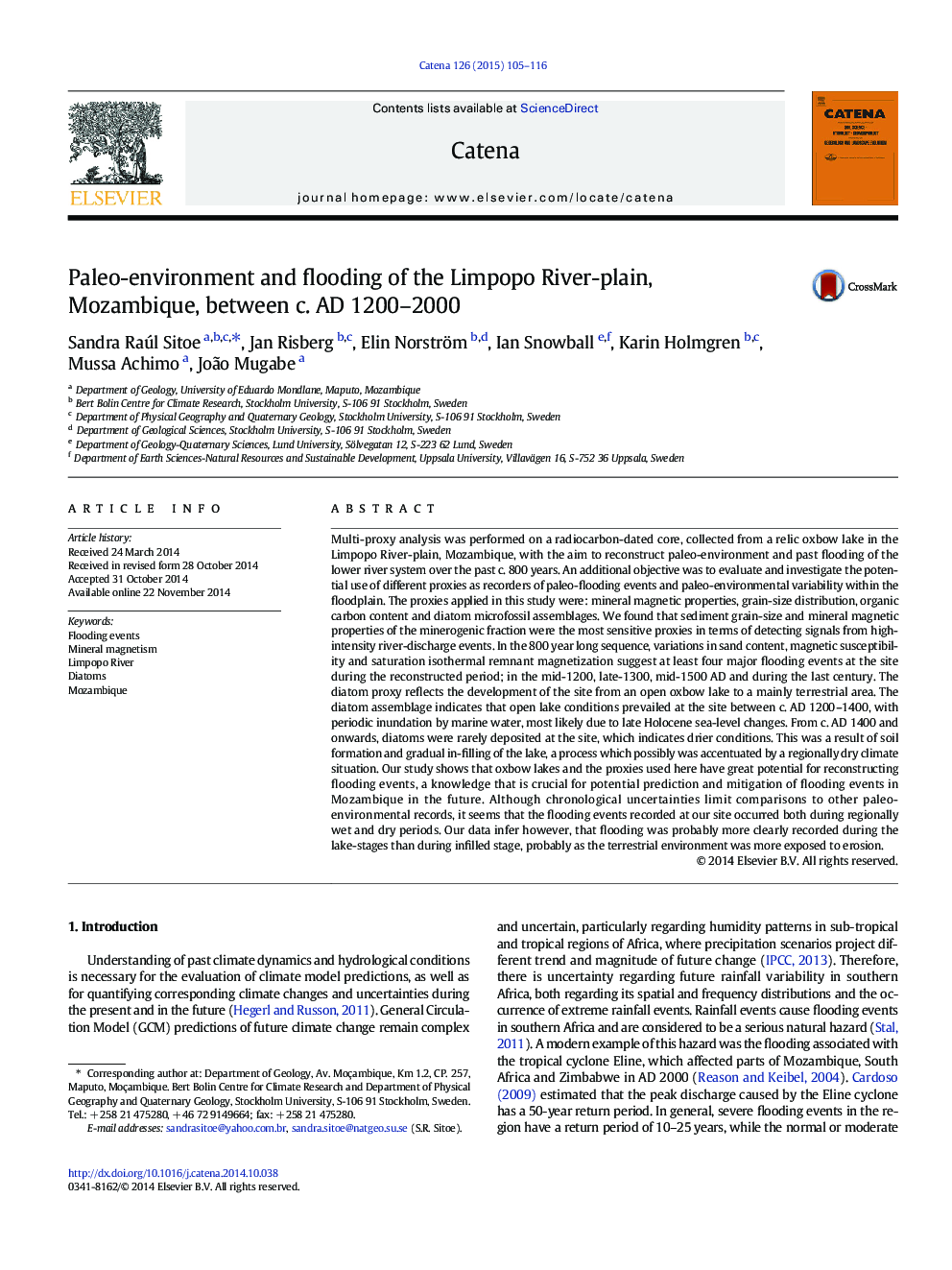| Article ID | Journal | Published Year | Pages | File Type |
|---|---|---|---|---|
| 4571381 | CATENA | 2015 | 12 Pages |
•This is the first stratigraphic report on sediment of the Limpopo River flood-plain.•We identified past flooding events using mineral magnetic parameters and grain-size.•Four high-magnitude flooding events were identified during the last c. 800 years.•The site changed from a lake with occasional input from marine waters to dry surface.
Multi-proxy analysis was performed on a radiocarbon-dated core, collected from a relic oxbow lake in the Limpopo River-plain, Mozambique, with the aim to reconstruct paleo-environment and past flooding of the lower river system over the past c. 800 years. An additional objective was to evaluate and investigate the potential use of different proxies as recorders of paleo-flooding events and paleo-environmental variability within the floodplain. The proxies applied in this study were: mineral magnetic properties, grain-size distribution, organic carbon content and diatom microfossil assemblages. We found that sediment grain-size and mineral magnetic properties of the minerogenic fraction were the most sensitive proxies in terms of detecting signals from high-intensity river-discharge events. In the 800 year long sequence, variations in sand content, magnetic susceptibility and saturation isothermal remnant magnetization suggest at least four major flooding events at the site during the reconstructed period; in the mid-1200, late-1300, mid-1500 AD and during the last century. The diatom proxy reflects the development of the site from an open oxbow lake to a mainly terrestrial area. The diatom assemblage indicates that open lake conditions prevailed at the site between c. AD 1200–1400, with periodic inundation by marine water, most likely due to late Holocene sea-level changes. From c. AD 1400 and onwards, diatoms were rarely deposited at the site, which indicates drier conditions. This was a result of soil formation and gradual in-filling of the lake, a process which possibly was accentuated by a regionally dry climate situation. Our study shows that oxbow lakes and the proxies used here have great potential for reconstructing flooding events, a knowledge that is crucial for potential prediction and mitigation of flooding events in Mozambique in the future. Although chronological uncertainties limit comparisons to other paleo-environmental records, it seems that the flooding events recorded at our site occurred both during regionally wet and dry periods. Our data infer however, that flooding was probably more clearly recorded during the lake-stages than during infilled stage, probably as the terrestrial environment was more exposed to erosion.
